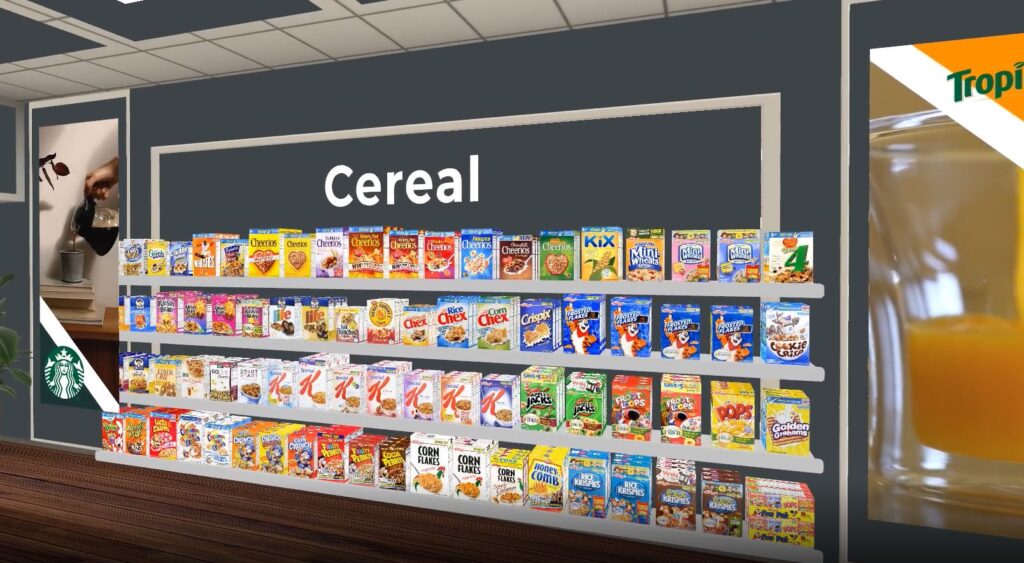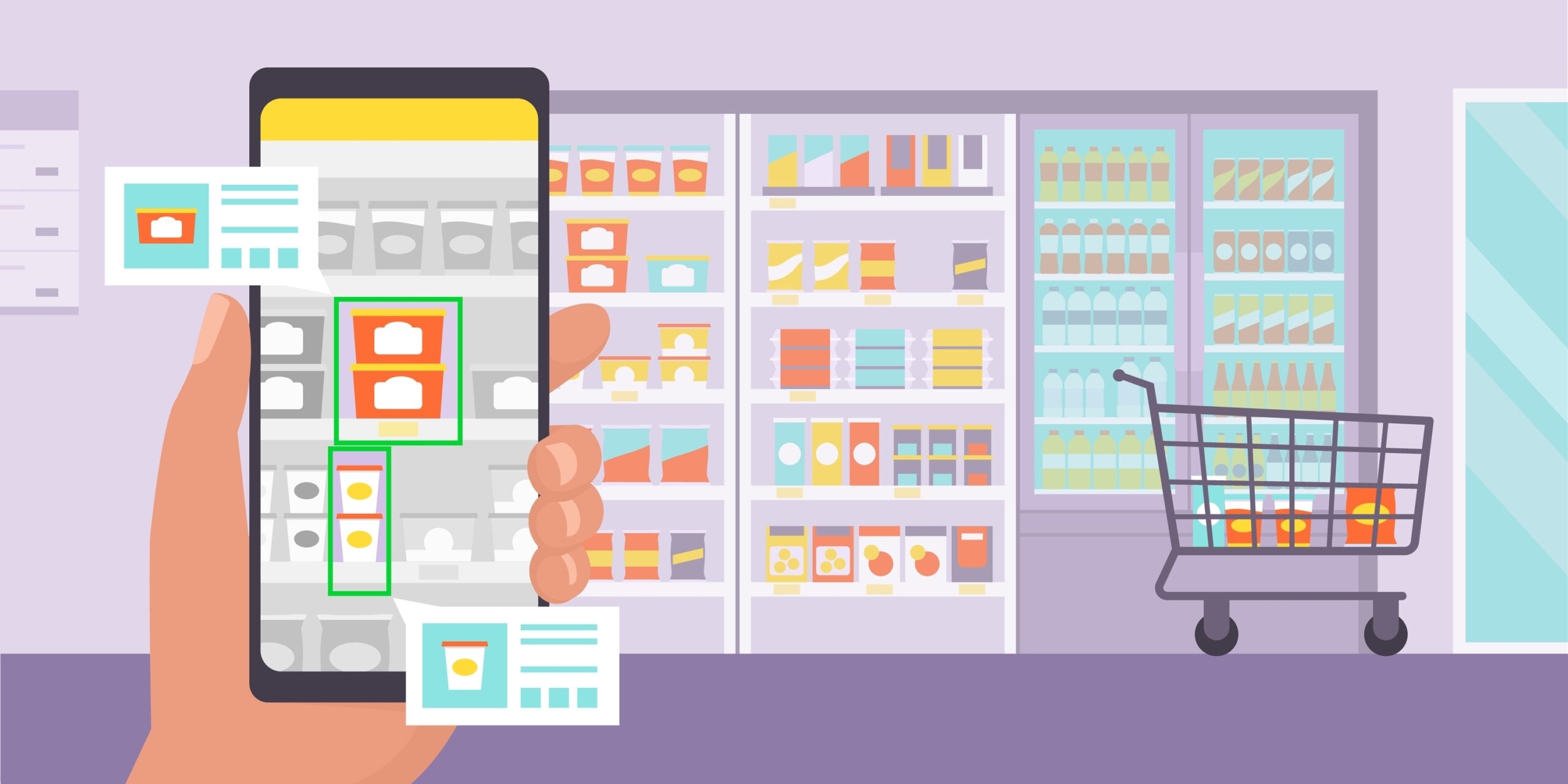Even before the pandemic caused widespread shutdowns and encouraged many people to stay away from physical store locations, e-commerce was already revolutionizing the retail industry and disrupting traditional brick-and-mortar stores. Thanks to e-commerce platforms like Amazon, online stores are now one of the most common ways for shoppers to buy products, with e-commerce predicted to surpass the $6 trillion mark by 2024. Which means online retailers are under fierce competition. Now, the new innovative e-commerce opportunity is to give shoppers an immersive experience by introducing virtual stores.
So, what exactly is a virtual store? It’s an e-commerce experience that virtually replicates a real-life store in a 3D environment, bridging the gap between real-life shopping and digital shopping. The tools retailers are using include 3D modeling, virtual reality (VR), augmented reality (AR), etc.
These tools give shoppers an immersive retail experience, making them feel like they are present in the store’s physical location. The shoppers are also able to see their purchases and have real-time interaction with the sales associates like they would with in-store shopping. With all these new capabilities, can virtual stores teach us anything about shopper behavior?
How virtual stores work
A virtual store will depend on the type of brand and what it offers. For instance, an e-commerce site that carries clothing and apparel can give its shoppers an immersive experience by having augmented reality fitting rooms, where online customers can select and try out outfits before purchasing. Virtual retail stores that carry beauty brands might also feature this same experience for their makeup products. A furniture store will have an app or a virtual reality showroom where customers can choose and arrange furniture exactly how they would in their homes.
The objective of virtual shopping platforms is to enable customers to interact and experience a product or service before actually making a purchase. Virtual stores, therefore, help retailers create a digital storefront that replicates the experience of shopping in a brick-and-mortar store.
Types of virtual stores
Virtual stores strive to give shoppers the physical touch of shopping online, hence offering the target customers an immersive and interactive store experience.
There are several types of virtual stores. These include:
- Virtual try-on: This store allows shoppers to try on products before purchasing. A virtual try-on store uses VR or AR technology to give shoppers an immersive experience of what the product looks like on them.
- Virtual try-out: This store allows online shoppers to place virtual products in the real world and see how the items look on a shelf.
- Virtual search: This virtual store allows shoppers to search for products using images instead of words during virtual shopping.
- Virtual reality store: This type of virtual store uses VR technology to give shoppers an immersive experience during their virtual shopping. Customers require a computer or VR headset to access the virtual store and get to experience a digital twin where they interact with the products like they would in real life.
- 360-degree product view: This store enables shoppers to see a product in the virtual store from all angles.
- 3D webstore: This store gives shoppers a 3D experience in a virtual store. It combines 3D images of the product and uses a 360-degree view so that shoppers can experience the product from all angles during virtual shopping.
- Video interactions store: This store offers one-on-one virtual consultations through video chats or chat features with clients to build credibility and trust before the shoppers can choose to purchase something. Virtual consultants may help shoppers find the products they’re looking for or give product recommendations.
All these types of virtual stores enable retailers to create digital simulations of their real stores to give shoppers the virtual world equivalent of shopping in a physical store.
Decoding shopper behavior using virtual stores
Virtual stores allow retailers to quickly and cost-effectively recreate the environment of an actual retail store on a computer screen. The target consumers can enter the virtual shop using their phones, computers, iPads, tablets, or headsets. They experience the simulated world of the virtual store, and interact with the products in a virtual environment as they would in a physical store.
The virtual shopping experience enables the shopper to pick up a product from the shelf and examine it from all angles. The shopper can then add the product to the cart and checkout.
A retailer can analyze shoppers’ behaviors by tracking their activities during the shopping experience. The retailer records the amount of time spent by the consumer in every product category while shopping virtually.
It’s useful to track the time each shopper spends examining every side of a product, the quantity each shopper purchases, and purchasing order. The data collected during each shopper’s virtual shopping activity helps retailers improve the customer experience.
In the case of retail merchandising and virtual store planning, retailers and brands also get a significant amount of shopper behavior insights. Virtual store research of consumer behavior and attitude towards a product has a 91% correlation to real-life store results.
The data collected from virtual store consumer behaviors analysis helps retailers experiment with various shop layouts, product displays, and lighting designs and see how all these impact virtual shopping behavior.
Retailers also use virtual shopping data to gain insights into shopper preferences and make data-driven decisions on how to stock and display products in a virtual store to improve the online shopping experience for consumers.
Questions to ask during virtual store testing
Unique configurations of virtual stores can help retailers answer basic questions about their products and consumer behaviors. Here are some of the main questions that retailers aim to answer throughout the process of virtual store testing:
- How should we display our products? An analysis of consumer behaviors towards particular products, especially in virtual stores that stock several brands, can help inform retailers about the product display. Product arrangements help shoppers shorten their browsing time by getting what they want faster. Retailers can use various criteria to group products on a virtual store shelf. Some of the groupings can include: product prices, for instance, gourmet meals or value meals; user categories, such as the “children’s section,” or according to brands (like Nike, Woolworths, etc.).
- Do we have enough product variety? The analysis of consumer behaviors during virtual shopping can help retailers assess whether they offer their customers enough product variety. The retailers can answer this question by monitoring which products consumers consider as alternatives to their first preferences.
- How should we price our products? Retailers can determine the pricing of their products by testing a variety of prices on their products to help predict consumer behaviors towards changes in product prices. Price testing can also help in making strategic decisions about merchandising.
Improving shopper’s experience in the virtual store
It is essential to give shoppers an immersive experience when shopping for various products in a virtual store. As a retailer, be aware that consumers today have several options in terms of places where they can purchase particular products. Therefore as a virtual store, strive to give your customers a pleasant experience. You can give your customers a great experience by considering the following factors:
- Lower your website’s load time: Ensure your virtual store’s website loads in seconds immediately after your customers click on it. Customers will abandon your virtual store and head somewhere else if they discover that the site takes several minutes to load.
- Upload high-quality product images: Do not compromise on the quality of images and videos on your site. Give your shoppers an immersive experience with clear, crisp quality product images and videos to give your shoppers an accurate analysis of a product as they interact with it at the virtual store.
- Post customer reviews: Include the reviews of your past customers who have experienced your virtual store. The reviews help increase the confidence of your new customers when they visit your virtual store and provide the awareness that other people trust your brand for quality and a great experience.
- Live chat experience: Include live chat with clients who want to ask questions about the products and get real-time responses.
- Simple checkout process: Streamline the cart process for your customers during virtual shopping to make their experience fast and easy. Have a secure checkout process that allows shoppers to pay for products while they are on your site without having to exit and go into other apps or sites. Integrate the payment procedures and make it a one-stop experience.
A great customer experience helps businesses retain their existing customers and also connect with new ones.
How do virtual stores help retailers?
Virtual store testing helps retailers in the following ways:
Brand loyalty: Data obtained from the shopper’s behavioral analysis helps determine their product preferences. The retailers can then increase their brand loyalty and customer retention using this data.
Basket size: Analyzing the number of products purchased by shoppers in a single transaction helps retailers identify the products or promotions that effectively drive their sales.
Conversion rates analysis: Conversion rate is the percentage of new clients who make purchases after visiting the store. A high conversion rate shows that the store attracts more clients and converts them into buyers.
Foot traffic: This data shows the area of the store that gets more visitors and the customers’ product preferences.
Consumer demographics: Virtual stores provide relevant data that inform retailers and brands on consumer demographics. This helps companies determine the audience that they should target with their marketing.
Options: An omnichannel strategy will benefit from the addition of a virtual store, giving shoppers another touchpoint to interact with your products and business.
Start your virtual store with InContext
Virtual stores help retailers gain insights into shopper behaviors and preferences, improve the shopping experience, and increase sales.
If you want to continue learning about the possibilities of virtual stores for e-commerce or retail testing, contact InContext to hear it straight from the experts.[/vc_column_text][/vc_column][/vc_row]





